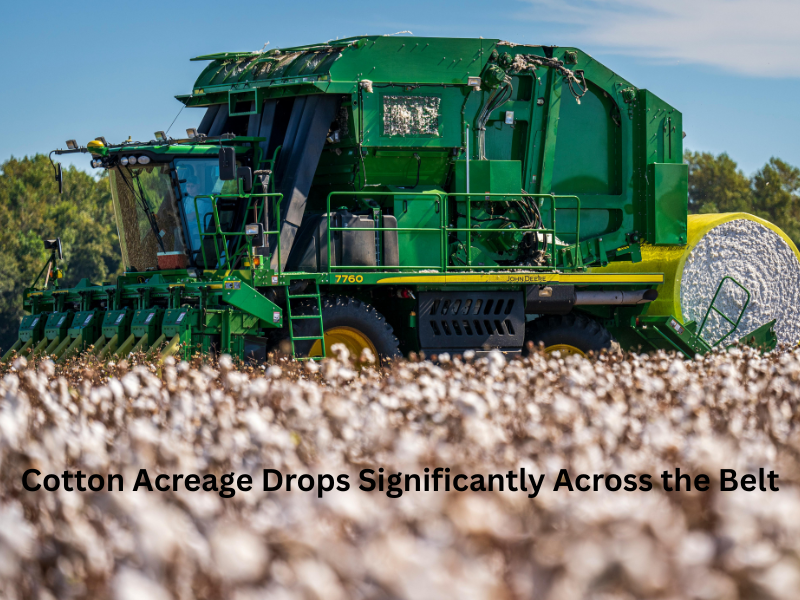
The U.S. cotton industry is experiencing a notable reduction in planted acreage in 2025, with declines ranging from 25% to 30% in various regions across the Cotton Belt. Tas Smith, Vice President of Producer Affairs for the National Cotton Council, confirmed the widespread decrease, noting that the overall crop will be considerably smaller than in previous years.
“It’s going to be a pretty low crop. The WASDE numbers have not really caught up to that, but I expect they will soon,” said Smith.
He explained that the current figures are based on acreage reports submitted to FSA offices, which reflect a broad, belt-wide downturn. Despite the lower production, cotton prices have yet to respond with a notable spike, though growers are hopeful for an eventual market adjustment.
Policy Win: Boost in Seed Cotton Reference Price
While the production outlook is challenging, there’s positive news for cotton producers on the policy front. Smith highlighted significant improvements in the agricultural provisions of the latest reconciliation package. Chief among them is the increase in the seed cotton reference price to $0.42, a change that could greatly benefit producers.
“That reference price would have triggered payments in 35 of the last 37 crop years,” Smith emphasized, estimating an average payment of $141 per acre under historical conditions.
Expanded Program Options for Growers
The policy updates also make key changes to crop insurance options, particularly improving the relationship between the Supplemental Coverage Option (SCO) and STAX (Stacked Income Protection Plan). Growers will now be able to enroll their seed cotton base acres in PLC (Price Loss Coverage) while simultaneously opting into SCO.
“It makes SCO more like STAX,” said Smith. “That’s a very positive change.”
These revisions offer cotton growers enhanced flexibility and financial security, especially in a year marked by reduced acreage and uncertain market prices.
Outlook
While the 2025 U.S. cotton crop is shaping up to be one of the smallest in recent years, legislative changes could help soften the blow for producers. With stronger support mechanisms and potential for improved market response, the cotton industry is navigating a tough year with cautious optimism.
Reported by Lorrie Boyer for AgNet West.









